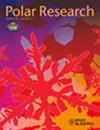加拿大北极村庄吊脚楼下的柴油泄漏:最好的补救方法是什么?
IF 1.3
4区 地球科学
Q3 ECOLOGY
引用次数: 1
摘要
在加拿大北极地区的偏远社区,石油碳氢化合物供应了大部分家庭能源需求。它们的运输和使用经常在人口密集地区造成小体积泄漏。当这些泄漏影响到北方村庄的吊脚楼下的土壤时,目前使用的补救方法是昂贵的,而且不太适合当地的情况。在这里,我们回顾了当地的限制和环境因素,并选择了最佳的修复技术:原位化学氧化,涉及过硫酸钠(SPS)碱与过氧化钙(CP)活化。活化的SPS对柴油中的化合物具有良好的反应性和适应性。它的高持久性允许污染物逐渐降解,调节与氧化反应相关的放热反应的热量释放。CP提供了合适的碱活化,充当氧化剂并向地下提供O2,这可能有利于最后的平滑生物修复步骤。SPS特性和污染物适应性意味着柴油被相对有效地去除,而地下温度的升高是有限的,从而保留了残余的永久冻土。化学物质的固体形式提供了安全、经济的运输和操作,以及氧化溶液制备和分布到地下的多功能性。最后,这种方法产生的氧化副产物在应用环境中不被认为是环境问题,并且在处理过程中可以部分地限制它们。本文章由计算机程序翻译,如有差异,请以英文原文为准。
Diesel spills under stilted buildings in Canadian Arctic villages: what is the best remediation method?
In remote communities in the Canadian Arctic, petroleum hydrocarbons supply most household energy needs. Their transportation and use frequently incurs small volume spills in populated areas. The remediation method that is currently used when such spills affect the soil under northern villages’ stilted buildings is expensive and not well suited to local conditions. Here, we review local constraints and environmental considerations and select the best remediation technology for this context: in situ chemical oxidation, involving sodium persulfate (SPS) alkali activated with calcium peroxide (CP). Activated SPS presents a good reactivity and amenability to compounds found in diesel. Its high persistence allows a gradual contaminant degradation, regulating heat release from exothermic reactions associated with the oxidative reactions. CP provides suitable alkali activation, acts itself as an oxidant and provides O2 into the subsurface, which may favour a final smoothing bioremediation step. The SPS properties and the contaminant amenability mean that diesel is removed relatively efficiently, while the subsurface temperature increase is limited, thus preserving the residual permafrost. The solid form of the chemicals offers safe and economic transportation and operation, along with versatility regarding the preparation and distribution of the oxidizing solution into the subsurface. Finally, the oxidation by-products resulting from this method are not considered to be environmentally problematic in the context of the application, and they can be partly confined during the treatment.
求助全文
通过发布文献求助,成功后即可免费获取论文全文。
去求助
来源期刊

Polar Research
地学-地球科学综合
CiteScore
3.20
自引率
5.30%
发文量
22
审稿时长
>12 weeks
期刊介绍:
Since 1982, Polar Research has been the international, peer-reviewed journal of the Norwegian Polar Institute, Norway''s central institution for research, environmental monitoring and mapping of the polar regions. Aiming to promote the exchange of scientific knowledge about the Arctic and Antarctic across disciplinary boundaries, Polar Research serves an international community of researchers and managers. As an open-access journal, Polar Research makes its contents freely available to the general public.
Original primary research papers comprise the mainstay of Polar Research. Review articles, brief research notes, letters to the editor and book reviews are also included. Special issues are published from time to time.
The scope of Polar Research encompasses research in all scientific disciplines relevant to the polar regions. These include, but are not limited to, the subfields of biology, ecology, geology, oceanography, glaciology and atmospheric science. Submissions from the social sciences and those focusing on polar management and policy issues are welcome. Contributions about Antarctica are particularly encouraged.
 求助内容:
求助内容: 应助结果提醒方式:
应助结果提醒方式:


